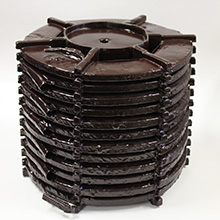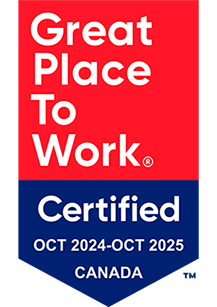Casting large amounts of material present special challenges in processing to minimize the possibility of cracking.
In addition to selecting the correct resin/hardener combination for the job at hand, the following suggestions will help in producing crack free components.
- Part design plays an important role in reducing internal stresses. The elimination of embedded sharp edges on metal inserts is very important. Maintaining uniform wall thickness will go a long way to insure uniform cure rates and reduce the number of stress points.
- Excessive internal stresses can also develop during the curing process. The cure temperatures must be carefully controlled according to the manufacturers recommendations. Excessively high temperatures will cause more shrinkage increasing internal stress. Ideally, large parts should see an initially low and slow cure followed by a "step cure" to achieve full properties. Another critical factor is the application of uniform heat during cure. Uniform heat will result in even shrinkage and less stress concentration. The final temperature in the step curing process should be above the Tg (glass transition temperature) of the material. Curing above the Tg allows for "stress relief" since the material softens and is able to yield.
- The speed of cooling down after cure is also critical. The cool-down should be gradual rather than "shocking" the part.

In addition to the above, there are products that are specifically formulated to resist cracking. These formulations are designed to maintain high Tg while incorporating ingredients that allow for a degree of inherent stress relief.



